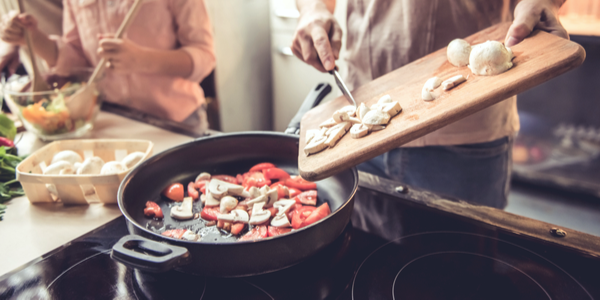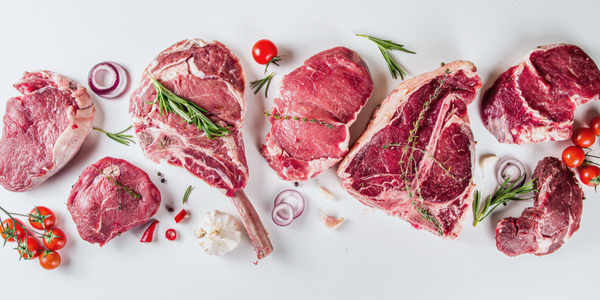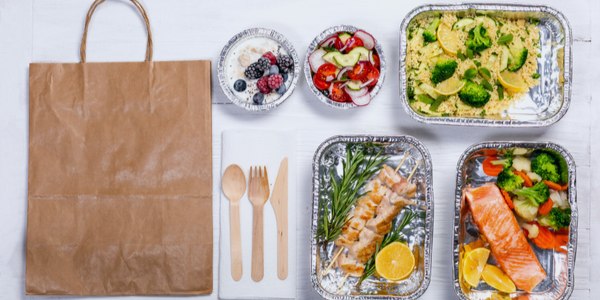
Food fuels the body is common knowledge. However, knowing the healthiest way to cook is a bit more elusive. Between boiling food, frying, steaming, baking, broiling, roasting, and even more, which cooking method is best to retain nutrients?
Read on to discover the impact of cooking methods on nutritional value, and find out which cooking methods are the best for optimal health.
Different Cooking Methods
There are many different cooking methods. From beginners to culinary experts, knowing the basics is an important step to becoming more in tune with food. Additionally, being aware of how cooking methods alter nutritional value is an empowering skill to employ.
With so many methods, it can easily get overwhelming. Focusing on a few basic techniques makes it possible to build a good foundation of culinary education.
Learning the "how" of cooking informs the "why" behind the change in the nutritional value of food. In other words, understanding what happens during each cooking process helps explain the nutrition changes that occur.
Baking
Baking is a fairly familiar cooking method for most people. It involves placing food into a pan or dish. The dish is then baked in the oven using dry heat, either covered or uncovered depending on the recipe instructions.
The following foods are commonly baked:
• Seafood
• Poultry
• Lean meat
• Vegetables
• Fruits
• Breads
• Desserts
One of the benefits of baking is that fat typically does not need to be added to the food to facilitate cooking. Baking uses a gentle heat to retain natural moisture.
Blanching and Boiling
Blanching is a method in which food is briefly boiled and then plunged directly into ice water. This stops the food from cooking. It also creates a tender yet crisp bite.
Boiling, a method many are familiar with, uses heated water or liquid to cook the food. Broth, water, or other liquids can be used to cook the food as long as the liquid bubbles vigorously. Moist heat is used in a rapid boil to facilitate complete cooking of the food.
Frying and Deep-Frying
Frying and deep frying are popular methods of cooking. Food is exposed to dry heat and cooked by submergence into a hot oil.
Both frying and deep-frying methods generally require high heat as well as large amounts of oil.
Searing and Braising (Stewing)
To sear a food means to quickly brown the surface. A high temperature is used to ensure flavor and a crusty texture result from the cooking process. This method is often applied to meats and other protein foods.
For searing, a small amount of oil is required to produce a golden crust. Searing is often followed by another method, such as braising or roasting.
Braising, also called stewing, involves slowly cooking a dish. The dish is covered with a small amount of liquid, usually water or broth. Some recipes make use of the cooking liquid by turning it into a sauce.
The sauce is generally full of nutrients from the food it was cooked with. The liquid is a crucial part of this cooking method. Liquid is vital to tenderize meat and enhance flavor.
Pan-Broiling, Broiling, Barbecuing, and Grilling
Both broiling and grilling are cooking methods that expose food to direct heating. With these techniques, fat drips off of the food while it cooks. Barbecuing and grilling rely on dry heat and either charcoal or fire to heat the food.
Some commonly grilled foods include:
• Vegetables
• Fruits
• Meat
• Fish
• Seafood
• Poultry
Broiling as well as indoor or outdoor grilling require strict adherence to the manufacturer's instructions. Good ventilation is absolutely necessary, and special equipment such as grill baskets can make cooking chopped vegetables a breeze.
Pan-broiling is a similar method to broiling. Foods are cooked uncovered in a skillet that is both preheated and non-stick in nature. No added fat or water is needed.
Poaching
Poaching is a method of cooking that can yield tasty results. To poach food, simply simmer ingredients in one of the following liquids:
• Water
• Broth
• Wine
The food is cooked evenly and until tender. People prefer poaching for the following reasons:
• Food that is poached retains its shape during the cooking process.
• Foods can be poached stove-top with a covered pan and minimal liquid.
• It is a good method for cooking fish.
Marinat
Marinating involves immersing food in a liquid mixture, generally called a marinade. Dry rub mixtures can also be used. Some recipes require overnight marinades, and others can be applied within minutes of cooking.
Pressure-Cooking
Pressure cooking uses a special type of equipment to reach high temperatures in a short time. It uses pressure to assist the cooking process, which makes it an efficient rival to popular methods such as boiling.
Roasting and Basting
Roasting is similar to baking, but with a few key differences. When a food is roasted, high oven temperatures are used to produce dry heat. This cooks the food until it is roasted.
Foods that are roasted are cooked uncovered. Commonly roasted foods include:
• Seafood
• Poultry
• Meat
• Vegetables (i.e. broccoli)
Roasting is a popular and versatile method of cooking since it can be accomplished using baking sheets or roasting pans. The fat drips away during cooking but the food maintains moisture. When roasting, it is important to strike a balance between ensuring that the food reaches the proper internal temperature and not overcooking the item.
Another method often used in conjunction with roasting is basting. To baste a food, a brush or spoon is used to pour liquid over meat during the roasting process. This increases the flavor profile and maintains the moisture of the dish.
Sauteing and Stir-Frying
High-quality, non-stick pans make sauteing a breeze. Taking small pieces of food and typically a small amount of fat, oil, cooking spray, or broth, foods are cooked on the stovetop.
Stir-frying is a traditional Asian method of cooking that is very similar to sauteing. Stir-frying involves quickly cooking small and generally uniform food pieces. As the name implies, the food is "stirred" in a large frying pan or wok while it cooks.
Additionally, a small amount of oil or cooking spray is used when stir-frying. Some recipe instructions require continual stirring of the food to avoid burning. It is crucial to follow the instructions and steps exactly when stir-frying food.
Microwaving
Microwaving gets a bad reputation but is actually considered safe. Studies show that reduced heat exposure, as well as shortened cooking times, prove successful in preserving nutrients.
Steaming
Simple and straightforward, steaming foods allows them to simmer and cook while suspended above a liquid. Hot water is a basic fluid to cook with, but other liquids can be used to lend more flavor to the food.
Steaming is a popular method for many reasons:
• Seasonings and flavors can easily be added
• Food typically maintains its shape
• Food generally maintains its texture
Browning
The browning of a dish is often used in tandem with other cooking methods. Either at the beginning or end of the meal preparation, the food item is quickly sauteed, broiled, or grilled.
This method is primarily used for the following reasons:
• Flavor enhancement
• Texture preference
• Visual appeal
The Best and Worst Cooking Methods
Cooking food before consuming it can improve human health, especially when it comes to digestion and absorption of nutrients. However, several key nutrients can be lost without mindful attention to cooking methods.
The following nutrients are often at risk for being reduced during the cooking process:
• Water-soluble vitamins, including most B-vitamins and vitamin C
• All fat-soluble vitamins (vitamins A, D, E, and K)
• Minerals such as calcium, magnesium, potassium, and sodium
The Best Healthy Cooking Methods
Steaming is among the most superior cooking methods for the following reasons:
• Nutrient value remains intact
• Flavors and seasonings can easily be added to improve the food
• Nutrients are not lost in the water used to cook it, unlike in boiling temperatures for example
Surprisingly, microwaving is also among the top methods of cooking food. Some losses occur, such as a 20 to 30 percent reduction of vitamin C in microwaved green vegetables. However, the loss experienced through microwaving is generally less than other cooking methods due to shortened cooking time and reduced heat exposure.
Poaching and boiling are also excellent methods for cooking. Use as little water as possible. This allows for the maximum amount of nutrients to be maintained.
Pressure cookers are also a popular pick for healthy recipes. Minimal oil and low nutrient loss (only 5 to 10 percent) make it efficient and quick for cooking.
Methods to Use with Caution
Any method that cooks vegetables beyond just tender-crisp treads a thin line. Overcooked vegetables risk the following:
• Lost flavor
• Dull color
• Reduction of important nutrients
Grilling, for example, is one such method. While grilling food can influence the flavor, charred foods lose nutrient content. Beyond this, charred meat can contain dangerous compounds warned against by the National Cancer Institute.
Marinating is another useful method, but it must be done correctly. Meat should always be marinated in the fridge, and they should never be left on the counter or outside by a grill. Sauces made from marinades should be boiled thoroughly before they are used to flavor cooked meats.
The Worst Cooking Methods
Frying, especially deep-frying, is one of the most unhealthy ways to cook food. Frying requires higher amounts of oil, and the food is literally submerged in the oil. The exposure heat combined with the amount of oil needed usually cancels out any nutrient value that was available.
Another aspect of frying that complicates nutrient content is that fried food is often battered or coated with additional ingredients. Foods such as tuna can lose up to 70 to 85 percent of their omega-3 (a healthy fat) content when fried.
An additional reason to avoid frying is that toxic substances called aldehydes are formed. Aldehydes have been researched more extensively in recent years. Experts link them to cancer and other serious diseases and conditions.
Depending on the oil used, even pan-frying can be dangerous. There are much healthier ways to cook common foods like chicken that are easy, nutritious, and affordable. The following tips can maximize nutrient intake while minimizing losses.
10 Tips for Creating Healthy Cooked Meals
1. When a cooking method requires liquid or fat, it is generally a good idea to select one of the following healthier options:
• Low-sodium broth
• Water
• Wine
• Lemon juice
• Healthy cooking oils
2. Drain and rinse canned food, such as vegetables, seafood, meat, and beans to reduce salt and oil before cooking. Do not forget that frozen foods may require some extra time to thaw but are usually packaged at peak nutrient levels. Frozen foods can be an excellent and easy option to keep on hand.
3. Before cooking, trim excess fat from meat. Another way to trim down fat is to use skinless poultry.
4. Add the following healthy flavors to meals instead of increasing the amount of salt or excess fat:
• Homemade salt-free seasoning blends
• Fresh or dried herbs (i.e. dried mustard, garlic)
• Acids, such as citrus juices/zests or vinegar
• Marinades (especially prior to grilling, marinating can help)
• Fresh hot peppers
• Dried fruits and vegetables, such as mushrooms, tomatoes, or cranberries
5. Always follow the cooking instructions, including safety procedures and appropriate internal temperature guidelines.
6. Consume the liquid that food is cooked in. It contains the nutrients that leaked out of the food during cooking.
7. Avoid peeling vegetables when possible. Consuming peels maximizes fiber and nutrient intake in the diet.
8. Cook foods in their whole form when possible, and poke small holes to release heat if necessary. Whole foods, when cooked, are exposed to less heat and less water. This creates less of a potential for nutrients to be leached from the food.
9. When cooking meat, poultry, or fish, ensure that the food is cooked thoroughly. However, only use the shortest amount of cooking time required for safe consumption of the food item. A meat thermometer can be inexpensive and helpful in discerning when the food is properly cooked but not overcooked.
10. Avoid using baking soda in cooking if possible. Baking soda combined with vegetables causes a loss of vitamin C. While it helps to maintain color, maintaining nutrient content is more important to health.
The Bottom Line
The way food is cooked can promote nutrient content, digestion, and absorption. On the other hand, cooking methods such as frying battered foods or not following proper heating and safety instructions can cause hazards to health.
The best cooking method can depend on what is being cooked, but when in doubt microwaving or steaming with minimal water saves both time and nutrient content for the consumer.
References:
American Heart Association. Healthier Cooking Methods. American Heart Association. Published 2015. https://www.heart.org/idc/groups/heart-public/@wcm/@fc/documents/downloadable/ucm_465750.pdf.
Ellis E. Culinary Lingo. Eat Right. Published July 14, 2020. https://www.eatright.org/food/planning-and-prep/cooking-tips-and-trends/culinary-lingo.
Klemm S. Fire Up the Barbecue. Eat Right. Published July 30, 2020. https://www.eatright.org/health/lifestyle/seasonal/fire-up-the-barbecue.
Kooienga M. 6 Healthy Cooking Techniques Every Beginner Chef Should Know. Nutrition Stripped. Published April 18, 2018. https://nutritionstripped.com/healthy-cooking-techniques-beginner-chef/.
Kunces L. Are You Cooking the Nutrients Out of Your Foods? Thorne. Published January 4, 2019. https://www.thorne.com/take-5-daily/article/are-you-cooking-the-nutrients-out-of-your-foods.
Lehman S. The Healthiest Cooking Method. Verywell Fit. Published December 22, 2020. https://www.verywellfit.com/healthiest-cooking-method-4153101.
Mayo Clinic Staff. Healthy-cooking techniques: Boost flavor and cut calories. Mayo Clinic. Published March 18, 2020. https://www.mayoclinic.org/healthy-lifestyle/nutrition-and-healthy-eating/in-depth/healthy-cooking/art-20049346.
Spritzler F. How Cooking Affects the Nutrient Content of Foods. Healthline. Published November 7, 2019. https://www.healthline.com/nutrition/cooking-nutrient-content.







